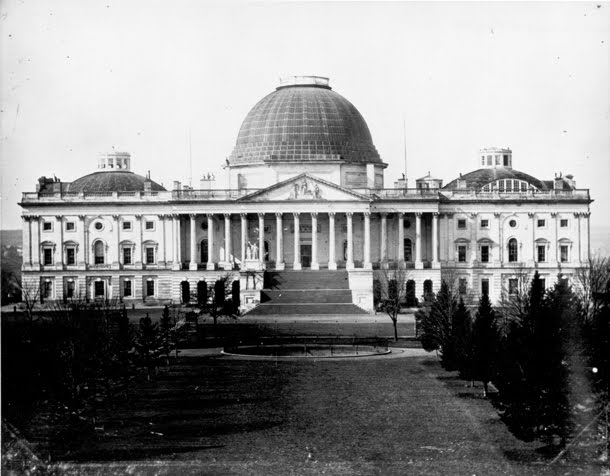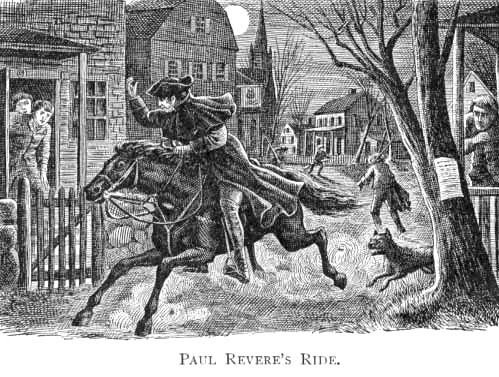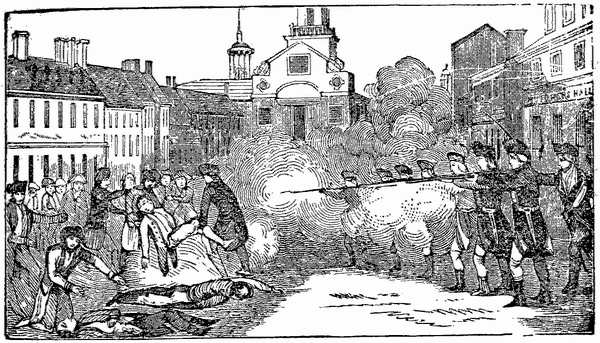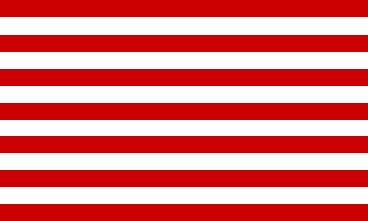From Libertarian Minds:
Government: The Greatest Economic Malefactor (Part II of II)September 3rd, 2010 → 11:05 am @ Kevin N. Glick
Comments (0)
23
Share5
tweets
retweet
The debate over whether or not the government ought to create a central bank is a complicated issue, and one that has long been an area of contention in American history. In fact, one of the prime disagreements between America’s earliest political parties, the Federalists and the Democratic-Republicans, was over this very issue. At the time this policy debate began, the two sides were represented most passionately by Alexander Hamilton and Thomas Jefferson, respectively. The tug-of-war that was to follow has lasted all the way up to the present day, and the various Hamiltonian-inspired experiments have taken a great toll on an ever greater number of people. It is high time this debate was finally laid to rest.
Alexander Hamilton, arguing in favor of a central bank, declared before Congress in 1791 that “… a National Bank is an Institution of primary importance to the prosperous administration of the Finances, and would be of the greatest utility in the operations connected with the support of the Public Credit.” (1) Thomas Jefferson, however, had a very different perspective on this issue. “I believe,” he stated:
…[The] Bank of the United States… is one of the most deadly hostilities existing, against the principles and form of our Constitution… An institution like this, penetrating by its branches every part of the Union, acting by command and in phalanx, may, in a critical moment, upset the government. I deem no government safe which is under the vassalage of any self-constituted authorities, or any other authority than that of the nation, or its regular functionaries. What an obstruction could not this bank of the United States, with all its branch banks, be in time of war! It might dictate to us the peace we should accept, or withdraw its aids. Ought we then to give further growth to an institution so powerful, so hostile?. (2)
The views expressed by these two men form the basis of the contemporary form of the debate.
The current Federal Reserve System is the third central bank to be attempted in US history. The first lasted from 1781 to 1811 and the second lasted from 1816 to 1836, when it was finally ended during the administration of Andrew Jackson after he vetoed a bill to recharter the bank. The second national bank was so unfavorable as a result of, amongst other things, inflation that several states attempted to cripple it by imposing heavy taxes on the bank branches residing within their respective states. (3) In response to these actions, Supreme Court Justice John Marshall ruled in McCulloch v. Maryland (1819) that such taxes were beyond the scope of the justly held powers of the States on the grounds that such meddling inhibited laws constitutionally enacted by Congress. He backed up his decision with the now well-known dictum, that “the power to tax involves the power to destroy.” But then that was, after all, the point.
The current national bank, the Federal Reserve, is no less injurious than its predecessors had been. Since the inception of the Federal Reserve in 1913, the average inflation rate is about 3.29, while the average inflation rate between 1787 and 1912 at no time in any equivalent ninety year period approached that level of inflation. (4) The U.S. dollar has been devalued to such an extent that a single dollar at the value it held in 2008 is worth approximately .04 cents at a 1913 value. (5) To gauge of the devaluation of the dollar from another angle, in 1913 $20.00 could purchase 1 oz. of gold. By the end of 2009, 1 oz. of gold is valued at over $1200. (6) This drastic devaluation is largely due to the inflationary policies of the Federal Reserve.
The government should not be interfering with the market in this way. Creating a semi-autonomous banking institution and entrusting to it the power to regulate credit by the arbitrary adjustment of interest rates is a dangerous move and Congress’ failure to exercise its duty of oversight of that institution is irresponsible, at best. The result has been 90 years of an inflationary monetary policy, stemming largely from the aforementioned arbitrary manipulation of interest rates, which is responsible for the dissemination of misleading market signals that in turn entice investors to make poor decisions with their capital.
An entrepreneur must rely on his or her ability to interpret various market signals in order to satisfactorily predict and thereby prepare for future events. A few of the phenomena he or she will be anticipating are changes in the demand for consumers’ goods, the scarcity of labor, and the availability of investment capital. From this data, an entrepreneur decides where to allocate his or her own capital within the inter-temporal stages of production. That is to say, to which level of goods (consumers’ goods, or the varying levels of producers goods) ought what quantity of resources be allocated? When one or more of these factors, which entrepreneurs must analyze and interpret as data representative of the actual market environment, is manipulated not by market phenomena, but by the positive actions of lawmakers or a board of central bankers, this data becomes falsified and entrepreneurs are thereby induced to make poor decisions in resource allocation. In particular, the manipulation of interest rates by the Federal Reserve indicates to entrepreneurs that there is a greater amount of real savings than actually exists on the market.
A low interest rate entreats entrepreneurs to invest in goods which are temporally remote from consumers’ goods (i.e., they invest in the early factors of production). This is because in a free market where there is increased savings, people are choosing to forego purchasing various goods and services now in order to buy more in the future when they have greater relative purchasing power. This future-orientation of consumers prompts entrepreneurs to prepare for greater consumption in the future, and less at the present. To do this, entrepreneurs invest more capital in the early stages of production where there is a greater demand and less in the later stages of production where this is a lesser demand. The capital which entrepreneurs use for this investment is drawn from the available pool of loanable-funds, which is derived from real savings, at the market interest rate, which is representative of the actual supply of capital and the demand for it. (7)
However, when the quantity of available credit is greater and the interest rate is correspondingly lower owing to the arbitrary actions of the Federal Reserve and not emanating from an increase in real savings, then while this still sends the signal to entrepreneurs that consumers are forgoing purchases now in order to buy more in the future, unfortunately this is simply not the case in reality. Consumers will continue to purchase goods, but now at a higher rate as a result of the lower interest rates on loans.
Responding to the low interest rates, entrepreneurs invest more heavily in the early stages of production than is sustainable. Adding to the dilemma, consumers’ increased appetite for spending leads entrepreneurs to allocate more resources to the late stages of production as well. While it appears to entrepreneurs that they are able to maintain this level of investment, in actuality the lowered interest rates do not indicate a correspondingly higher quantity of available capital. It’s fake! The combination of over-investment in consumers’ goods and mal-investment in the early factors of production as well as the overconsumption of goods by consumers eventually leads to an inevitable “bust,” and the economy will slump into a recession and, possibly, a depression. Friedrik A. Hayek explained this process as follows:
Booms have always appeared with a great increase in investment, a large part of which proved to be erroneous, mistaken. That, of course, suggests that a supply of capital was made apparent which wasn’t actually existing. The whole combination of a stimulus to invest on a large scale followed by a period of acute scarcity of capital is consistent with the idea that there has been a misdirection due to monetary influences. (8)
In this way it is possible to show that the boom-bust pattern of the business cycle is not brought about by an unhampered free market as the Keynesians would have it, but rather are the indirect result of market interference and credit manipulation by governments and central banks. But this credit expansion also has a more direct effect on the economy. Namely, inflation.
Since the value of a given unit of currency, when not backed by some form of commodity such as gold or silver (in which case the value of each unit of media is derived from that of the definite portion of the commodity represented thereby), is determined by the supply and demand of the monetary media, it follows that the increase in the supply of money without a roughly equivalent increase in demand must necessarily lead to a devaluation of that currency.
Unlike the situation in which each unit of a given currency is backed by some definite quantity of a commodity such as gold, in which case holders of the currency may simply have their money redeemed in gold by their bank, there is no safe store of value available to those who hold units of a devaluing fiat currency. As the quantity of money increases, the value will decrease and therefore the real value held by individuals possessing the currency is diminished. But that is not all. The creation of new money does not immediately destroy value. The destruction of value comes about as a result of the mal-investments described above. On the contrary, value is first being redistributed.
It takes time for the market to adjust to the existence of new money. Before this adjustment, i.e. when the money is new, prices have not yet accommodated the additional quantity of credit, bank notes, and whatever other form this increase might take. This allows the first holders of the new money to use a greater quantity of money than would have been available to them prior to the inflation and, what’s more, at its pre-inflationary purchasing power!
Only once this new money has been spent and circulates in the market do prices adjust themselves to the presence of the new money by rising as a result of increased demand. This rise in prices does not occur across all sectors of the economy at the same time, but rather is actuated in the order in which the new money reaches each sector of the economy. (9) Thus, the first holders of the newly issued monetary units, as described above, are actually recipients of the real value confiscated from all holders of additional units of the same currency.
Conversely, those individuals with the unfortunate distinction of being amongst the last to receive this money will, by that time, have to contend with inflated prices of the various goods and services on which they spend their money. And who are the first recipients of the new money? Debtors, the biggest of which is, of course, the government. And what’s more, this is done at the expense of creditors, who are today, as Ludwig von Mises points out, “simple citizens,” whose money has been deposited in banks in the form of savings accounts and subsequently loaned out. Mises goes on to explain that this process gradually wears away the assets of simple citizens for the benefit of the most affluent elements of society.
… the great millionaires, the owners of real estate, the owners of common stock, and so on, are [because they owe money from bonds issued or have received bank loans] debtors. The masses, the people whom we call less wealthy than the richer people, have invested their savings in savings deposits, in bonds, in insurance policies, and so on. And the banks have money from the savings accounts of simple citizens who, therefore, are creditors. And if you do something… against the power of the monetary unit today under present conditions, you are hurting not the rich, but the middle classes and the masses of people who are saving all their lives in order to enjoy a better old age and in order to make it possible for them to educate their children and so on. [Emphasis original] (10)
It ought to be plainly recognized by most people that the process described above stands in stark contrast to private property rights. What has been described is the blatant, coercive confiscation and expropriation of the private property of a vast number of individuals into the hands of certain privileged groups at the bequest of the government and its monetary agent, the Federal Reserve, which itself is nothing more than a cartel of private banks, protected by government-issued monopoly rights.
It is often stated that inflation is a tax, but none has yet taken this further to the position it ought to lead one, at least as far as is known by this author. For Americans once fought a long and bloody war over, amongst other things, the egregious practice by the British Parliament of levying taxation on the colonies without representation. But when was the last time an election was held whereby voters were allowed to choose the members of the Federal Reserve Board? Never! And with this being the case, by what other name might the Fed’s inflationary policies be called than taxation without representation?
According to John Locke, governments are instituted among men to secure the protection of life, liberty, and property. For governments to remain true to the Lockean Social Contract, they must immediately restrict their role in the economy to such limited activities as creating and enforcing laws prohibiting fraudulent business practices. However, when government takes a larger role in the market than this, as has been shown, property is threatened rather than protected. Redistributing wealth through inflation or taxation is unjust and contrary to the principles upon which the United States was founded.
Furthermore, when government begins intervening in the marketplace on behalf of certain interests and at the expense of others, a whole new problem arrises. This is best expressed by Frederic Bastiat in his classic political essay, The Law, when he says:
As long as it is admitted that the law may be diverted from its true purpose — that it may violate property instead of protecting it — then everyone will want to participate in making the law, either to protect himself against plunder or to use if for plunder… There will be fighting at the door of the Legislative Palace, and the struggle within will be no less furious.
Here Bastiat gives an almost perfect description of contemporary Washington politics, with special interest groups and corporations jockeying for protections or privileges not afforded them by the free market.
Intervention in the market economy, far from remedying the supposed failings of the free market, actually bring about and exacerbate the very inequalities and market downturns the interventions aim at correcting. Only a free market, unimpaired by the manipulations of governmental and central banking policies, affords people with the full benefits of the division of labor and affords investors and entrepreneurs with the market signals they need to make proper capital allocations, which in turn help to ensure that the economy will grow at rate which is sustainable. In order to avoid the ills which befall society as a result of these incursions, America must realign its economic policy with its philosophical roots, incorporate the insights of the Austrian economists, and desist from all further economic manipulation of all forms. The consequences of continued economic intervention will be disastrous.
See Part 1 to read about the damaging effects of price-fixing, rent control, tariffs, and protectionism.
__________________________________________________________________________________________________
1 Alexander Hamilton, Report on a National Bank delivered to the Speaker of the House of Representatives, 1970. (Reprinted in Executive Intelligence Review), January, 1992.
2 Thomas Jefferson, Jefferson: Writings, Compiled by the Library of America, (New York: Literary Classics of the United States, Inc.), 1984, pg. 1450.
3 Thomas Woods, Austro-Jeffersonian Perspective on US History (http://mises.org/media.aspx?action=category&ID=79)
4 See attached Chart #2 and Chart #3
5 Newsnet, “Two Cents Worth,” retrieved from http://files.meetup.com/603001/Two%20cents%20worth.pdf
6 Gold Prices Since 1968 (http://gold-prices.org/chart/)
7 http://www.auburn.edu/~garriro/chap3.pdf pg. 59-60
8 From an interview by Jack High. UCLA Oral History Program (1978).
9 Ludwig von Mises, On Money and Inflation, (http://mises.org/books/mises_money.pdf) pg. 66-68
10 Ludwig von Mises, On Money and Inflation, (http://mises.org/books/mises_money.pdf) pg. 47-48
About the author
Kevin Glick wrote 3 articles on this blog.
Kevin studied Government & National Security for two years at Tiffin University and has now transferred to Ohio State University to pursue a BA in "Russian" and "World Economy and Business." He is a staunch Libertarian and an ardent supporter of Austrian Economics and Libertarian ethics.
Saturday, September 4, 2010
Subscribe to:
Post Comments (Atom)
.gif)































No comments:
Post a Comment